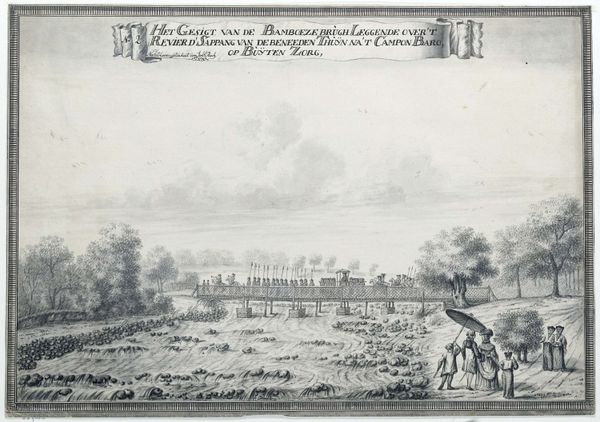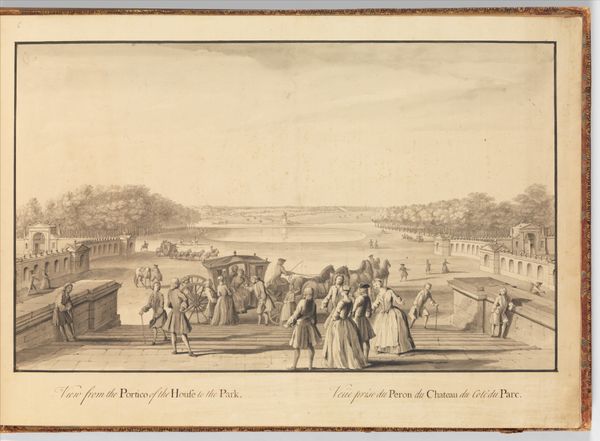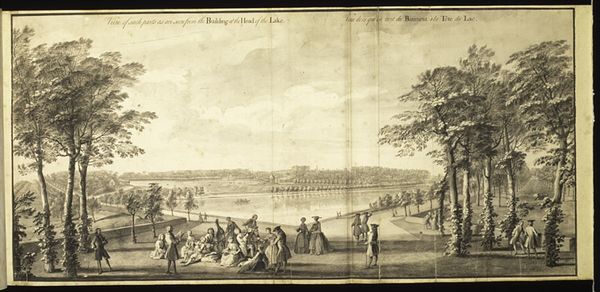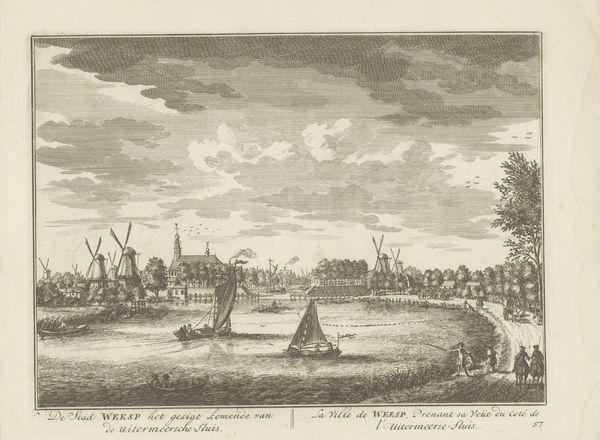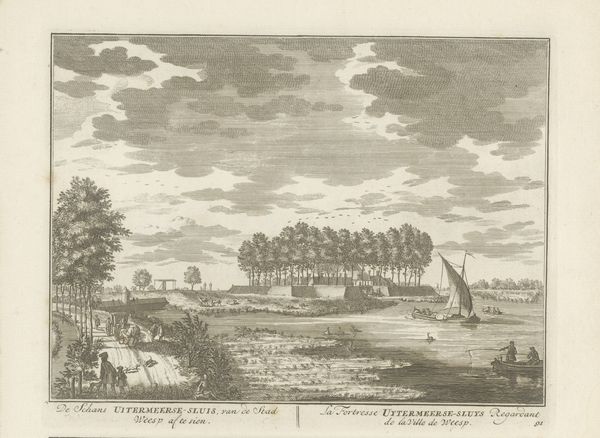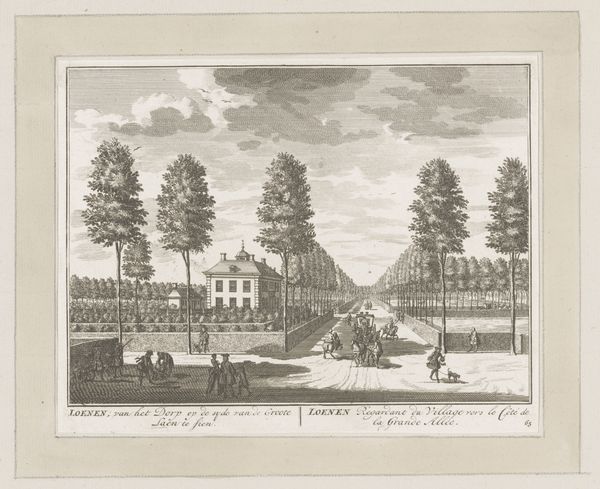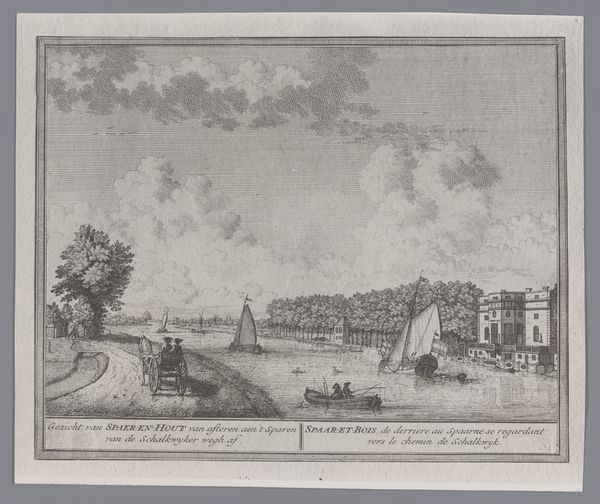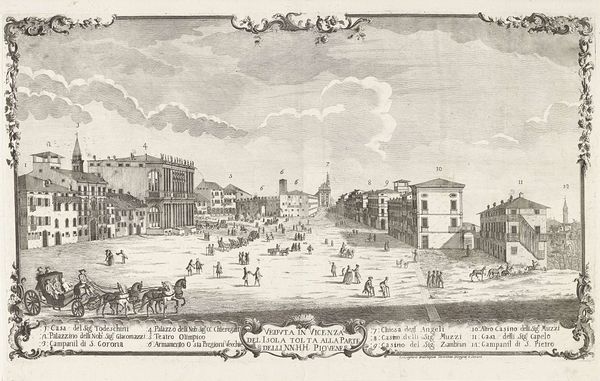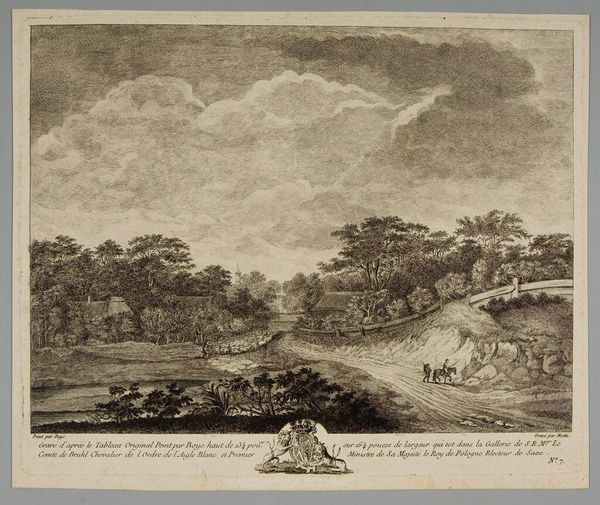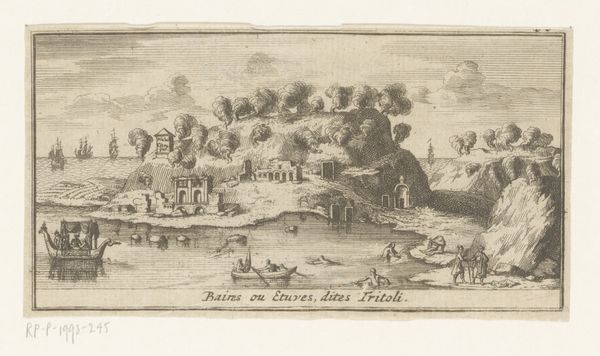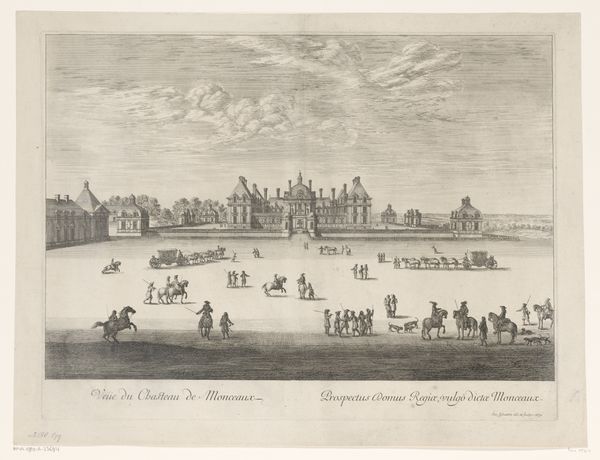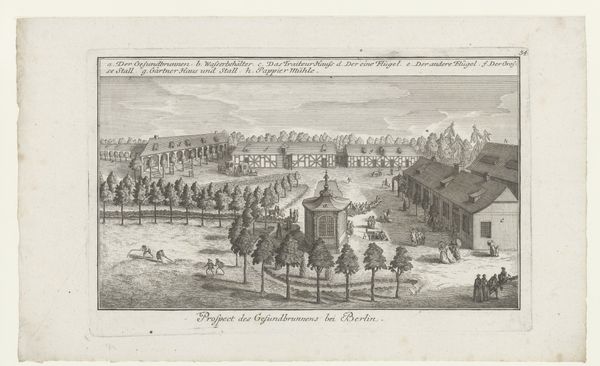
Het Gezigt van Indramago boven Beuijtenzorg binen op t' Pleijn, met desselfs Speelheuijs, Water Fonteijne en Bruggen 1770
0:00
0:00
print, engraving
#
dutch-golden-age
# print
#
landscape
#
cityscape
#
engraving
Dimensions: height 37 cm, width 53 cm
Copyright: Rijks Museum: Open Domain
Curator: Here we have Johannes Rach’s “Het Gezigt van Indramago boven Beuijtenzorg binnen op t' Pleijn, met desselfs Speelheuijs, Water Fonteijne en Bruggen,” created in 1770. It's an engraving depicting a Dutch East India Company outpost. Editor: The scene feels incredibly ordered, almost like a stage set. The tiny figures are meticulously arranged. I wonder about the power dynamics at play within this constructed space. Curator: Indeed. Rach documented scenes for the VOC, and this is likely Indramayu, near Buitenzorg, now Bogor in Java. Notice the precise lines and detailed rendering. Engravings like this were crucial for disseminating information about colonial holdings. Editor: And what information were they meant to convey? The placid order? The control of the landscape? The seemingly docile local population? The careful distribution of shadow emphasizes how the composition isn't just descriptive, it’s prescriptive, an assertion of power. The symmetry further suggests an imposed structure. Curator: The 'Speelheuijs,' or "play house" implies leisure, which would likely have been a symbol of wealth and control for the Dutch. Also, this area had significant economic importance, with indigo and other crops fueling global trade networks. Editor: I think it’s critical to look closer at who's missing. This image erases so much – the violence inherent in colonization, the displacement of indigenous people, and the exploitation required to create such "leisure." How did Rach's role contribute to sustaining a system of inequality? Curator: These images certainly played a role in shaping European perceptions and reinforcing colonial narratives. They served as propaganda. It is worth noting that there is considerable local Javanese labor visually apparent. Editor: Absolutely. And how complicit were European artists in romanticizing oppressive structures? Whose narratives are prioritized when works like this get reproduced and circulated? This forces us to examine the politics embedded within landscape art itself. Curator: This print, presented almost as an architectural document, gives insight into Dutch colonial aspirations and how those aspirations affected people and space. Editor: The legacy of this piece remains relevant. These images helped to solidify colonial ideologies. It is important for us to remember that their narratives can still shape the present if left unexamined.
Comments
No comments
Be the first to comment and join the conversation on the ultimate creative platform.
